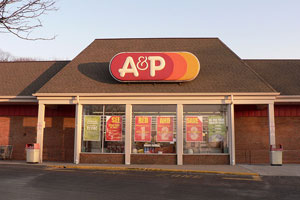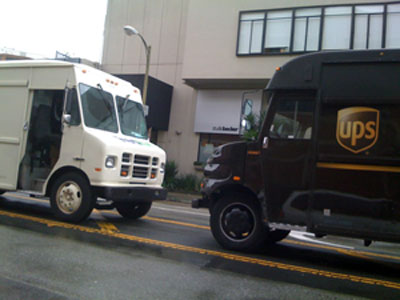
This was captioned "A&P still exists?" on Flickr. It's a total mystery why a store this massive can't compete with Super Stop & Shop. | Flickr/<a href=http://www.flickr.com/photos/iandavid/3274996459/sizes/z/in/photostream/">iandavid</a> (<a href="http://www.creativecommons.org">Creative Commons</a>).
On Tuesday, RedState’s Erick Erickson used his morning email blast to highlight a post by LaborUnionReport (an anti-union website) blaming the bankruptcy of the “151-year old Great Atlantic and Pacific Tea Co., once the nation’s largest grocery chain,” (a.k.a. A&P) on the Union of Food & Commercial Workers (UFCW). A&P’s bankruptcy couldn’t possibly have to do with the massive changes in the grocery industry since 1975, the last year that the company dominated the market. Fragmentation of the industry, the gradual extinction of smaller stores, the explosion of regional supermarket chains, and the eventual arrival of Target and Walmart in the grocery business couldn’t have possibly been the reasons behind A&P’s decline. Nor could a series of dubious acquisitions, an ultra-competitive market, and the most difficult economic environment in decades have killed the company. No: it had to be the union. I asked Jim Papian, a spokesman for the UFCW, for their side of the story:
The charge that the union is responsible for [the A&P bankruptcy] is patently absurd. UFCW members work for regional chains Shop Rite, Stop + Shop, FoodTown, (to name only a few) plus national, Fortune 500 companies Kroger, Safeway, and Supervalu. These grocers are successful. Some are industry leaders. UFCW members work in almost every kind of market across the country and are instrumental in the success these companies enjoy.
If hiring unionized workers is so devastating to a grocer’s bottom line, why do so many other companies manage to do it and stay in business? Anyway, I’m sure if Mother Jones goes under, it will be because we’re UAW members, not because we’re in print journalism. Like all union members, our main goal is to undermine the financial health of our employer so we all lose our jobs.














